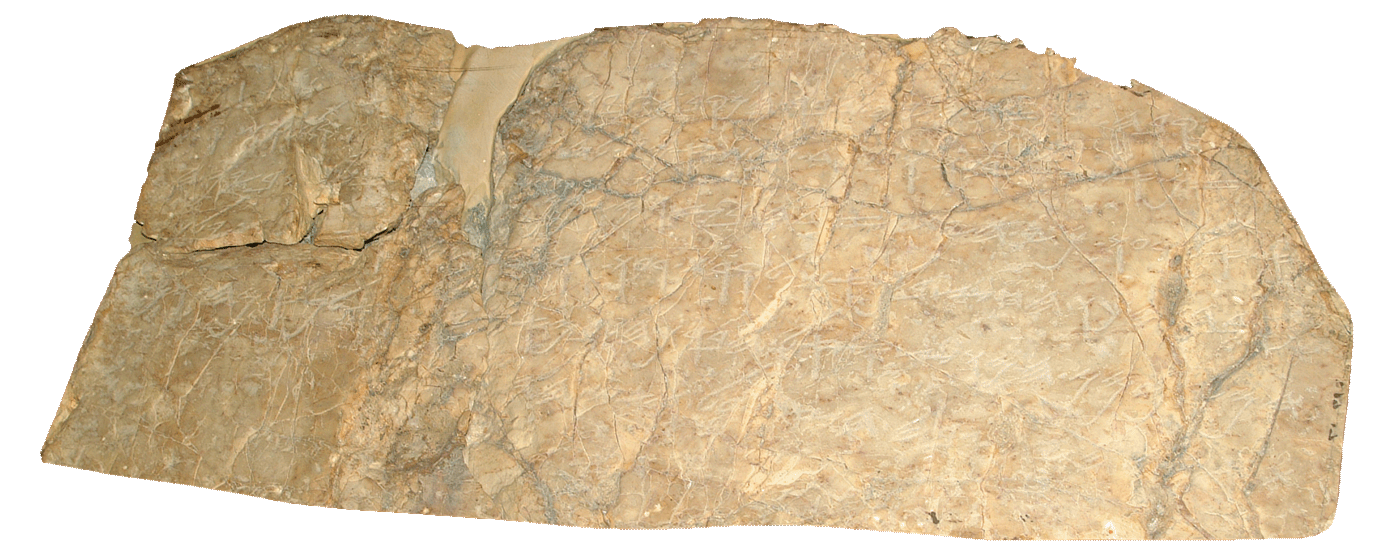1–2 Chronicles
Focusing on the Davidic Promise and Worship in the Temple
Central Teaching
Focusing on Israel’s worship of God in the temple and on God’s faithfulness to the Davidic covenant, 1–2 Chronicles retell the history of Israel from Adam to the return of the exiles.
Memory Verse
Setting
First and Second Chronicles retell Israel’s history from Adam to the decree of the Persian King Cyrus (539 BC). Yet the last individual cited in the Davidic genealogy of 1 Chronicles is a man named Anani (1 Chron. 3:24), who was born around 445 BC. Therefore, 1–2 Chronicles were probably written around the year 400 BC. This places the composition of 1–2 Chronicles well after the destruction of Jerusalem and the exile (586 BC) described at the end of 2 Kings. In fact, by 400 BC several groups of exiles had returned to Jerusalem and the events in Ezra and Nehemiah had already taken place.

The Siloam Inscription. In preparing for the Assyrian invasion, King Hezekiah of Judah constructed a tunnel to supply his fortress in Jerusalem with water. Faintly inscribed on this stone (taken from the wall of the tunnel) is a description of the construction of the tunnel.
Message
First and Second Kings conclude the Deuteronomy-based history and looks backward at the failure of Israel and Judah to obey Deuteronomy, explaining why the terrible judgment (exile) came. First and Second Chronicles retell much of the same story with a forward-looking orientation. In essence, the author seems to be saying, “Let’s move on.”
Thus, 1–2 Chronicles basically cover the same historical time period of Israel that is covered in 1–2 Samuel and 1–2 Kings, but with a different emphasis and a different theological purpose. The Chronicler (as the author of 1–2 Chronicles is typically called) still acknowledges that Israel’s sin and disobedience led to the exile, but he zeroes in on two major forward-looking themes. First he stresses God’s divine covenant with David (2 Sam. 7), which promises that a future descendant of David will sit on the throne and rule over Israel perpetually. Since the Chronicler is looking forward and trying to focus on the positive aspects of the monarchy, he skips over many of the terrible sins and failures of the kings in 1–2 Kings, especially the big sins of David (the Bathsheba affair) and Solomon (foreign wives and idol worship).
The second major theme of 1–2 Chronicles is worship in the temple. Much of the focus of 1–2 Chronicles is on the construction of the temple and on proper worship. Thus, many of the kings in 1–2 Chronicles are evaluated on how they relate to the temple rather than how they relate to Deuteronomy (as in 1–2 Kings).
Outline
Interesting Features
- The terrible sins of David and Solomon are not mentioned.
- A strong emphasis on the written word of God runs throughout 1–2 Chronicles.
- The focus of 1–2 Chronicles is positive and forward looking, in contrast to 1 Samuel– 2 Kings, which is negative, looking back.
- First Chronicles 21:1 is one of the few Old Testament passages that mention Satan.

Bronze trumpet (1000–800 BC). When Solomon brings the ark to the temple, 120 priests blow on their trumpets in celebration. Trumpets play an important role in 1–2 Chronicles, where they are mentioned fifteen times.
Connections
The stress on the lineage of David in 1–2 Chronicles gives these books a messianic tone, pointing forward to the coming of Jesus Christ as the fulfillment of the Davidic covenant. In addition, 1–2 Chronicles teaches us that even if we find ourselves in difficult circumstances, we should trust God’s promises and continue to worship him wholeheartedly. Likewise, if we sin, we should humble ourselves and repent, claiming God’s forgiveness and moving on in life as we put our sinful past behind us.